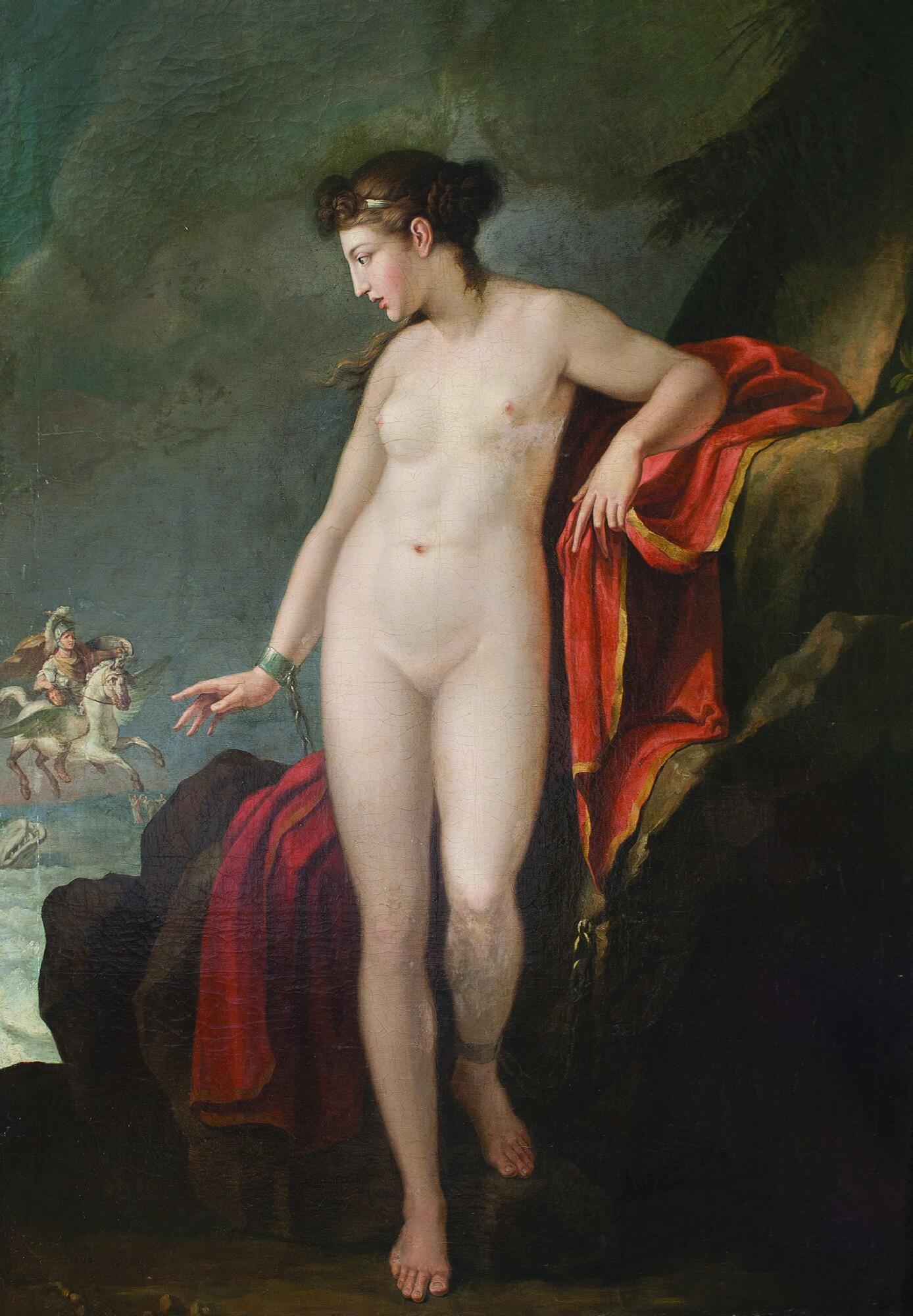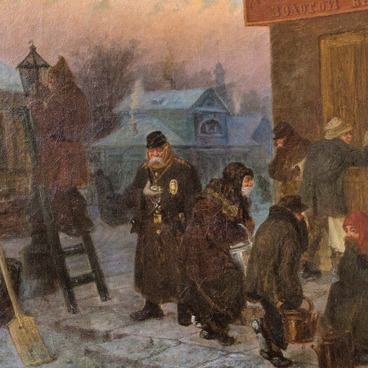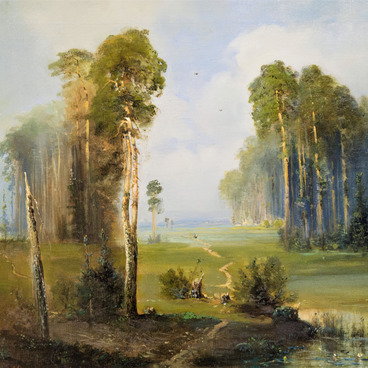Domenico Scotti was born into a family of artists in Northern Italy who later moved to Russia. His first teacher was his father, Carl Scotty. In Moscow, Domenico served at the palace school and took commissions. Thus, he painted the Church of the Hospice House of Count Sheremetev in Moscow and drawings for the ‘Description of the Armory’.
In 1807, Scotti received the title of ‘appointed academician’ from the St. Petersburg Academy of Arts and in the same year created the painting ‘Andromeda Chained to the Rock’. In ancient Greek mythology, she is the daughter of the king of Aethiopia, Cepheus, and his wife, Cassiopeia. She was doomed to be sacrificed to sate a terrible monster sent by the god of the seas Poseidon to punish Cassiopeia, who had boasted too much of her beauty. Andromeda was saved by Perseus, the son of Danai and Zeus. When he was flying over the sea with the head of the defeated Gorgon Medusa, he saw Andromeda chained to the rock and a sea monster approaching her. Perseus had a fight with the monster and won.
The painting was conceived in the traditions of the luxurious palace painting that was common in the era of Russian classicism. The image of Andromeda is large and full-length. The gloomy rock, the dark sky and the sea, the bright drapery are a contrasting background for the light skin of her body. The movements of her delicate arms and slender legs, the head posture — everything is full of lightness and grace. The pictorial space is full of classical harmony, while the small figure of Perseus on a horse, the harmless mouth of a sea monster, the barely discernible images of Cepheus and Cassiopeia remind about the tragedy.
In the early 19th century, the plot of the ancient Greek myth was quite popular in Russia. In painting and literature, it became an allegory of the events that took place in those years in Russia and abroad. In St. Petersburg and Moscow, there were alarming rumors about the triumphal march of Napoleon’s army across Europe. On January 26, 1807, the battle of Preussisch-Eylau took place, in which Napoleon tried to destroy the Russian army. It was the bloodiest battle of the Napoleonic Wars. The Russian army struck the first major blow and stopped the invincible army of Napoleon. In the same year, the poet Gavriil Derzhavin wrote the cantata “Perseus and Andromeda”. In Derzhavin’s poem, Andromeda, who is chained to a rock, personifies Europe, the monster symbolizes Napoleon, and Perseus the savior stands for Russia and Alexander I.
In 1807, Scotti received the title of ‘appointed academician’ from the St. Petersburg Academy of Arts and in the same year created the painting ‘Andromeda Chained to the Rock’. In ancient Greek mythology, she is the daughter of the king of Aethiopia, Cepheus, and his wife, Cassiopeia. She was doomed to be sacrificed to sate a terrible monster sent by the god of the seas Poseidon to punish Cassiopeia, who had boasted too much of her beauty. Andromeda was saved by Perseus, the son of Danai and Zeus. When he was flying over the sea with the head of the defeated Gorgon Medusa, he saw Andromeda chained to the rock and a sea monster approaching her. Perseus had a fight with the monster and won.
The painting was conceived in the traditions of the luxurious palace painting that was common in the era of Russian classicism. The image of Andromeda is large and full-length. The gloomy rock, the dark sky and the sea, the bright drapery are a contrasting background for the light skin of her body. The movements of her delicate arms and slender legs, the head posture — everything is full of lightness and grace. The pictorial space is full of classical harmony, while the small figure of Perseus on a horse, the harmless mouth of a sea monster, the barely discernible images of Cepheus and Cassiopeia remind about the tragedy.
In the early 19th century, the plot of the ancient Greek myth was quite popular in Russia. In painting and literature, it became an allegory of the events that took place in those years in Russia and abroad. In St. Petersburg and Moscow, there were alarming rumors about the triumphal march of Napoleon’s army across Europe. On January 26, 1807, the battle of Preussisch-Eylau took place, in which Napoleon tried to destroy the Russian army. It was the bloodiest battle of the Napoleonic Wars. The Russian army struck the first major blow and stopped the invincible army of Napoleon. In the same year, the poet Gavriil Derzhavin wrote the cantata “Perseus and Andromeda”. In Derzhavin’s poem, Andromeda, who is chained to a rock, personifies Europe, the monster symbolizes Napoleon, and Perseus the savior stands for Russia and Alexander I.




